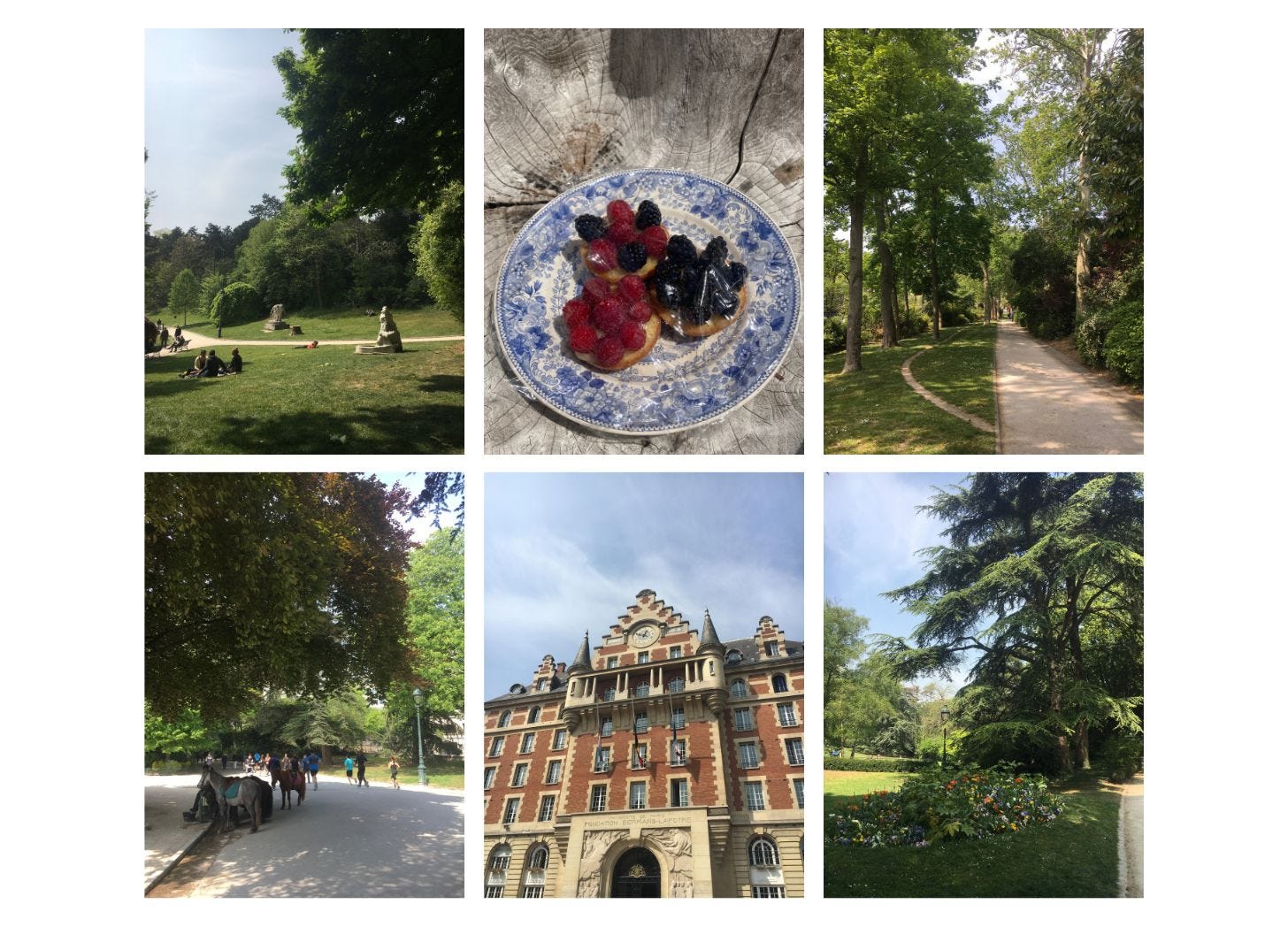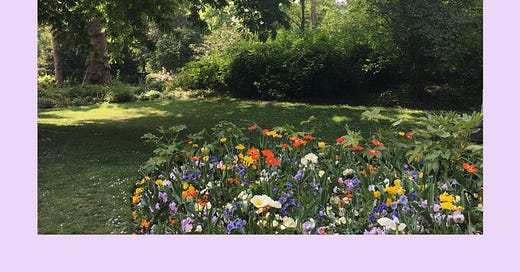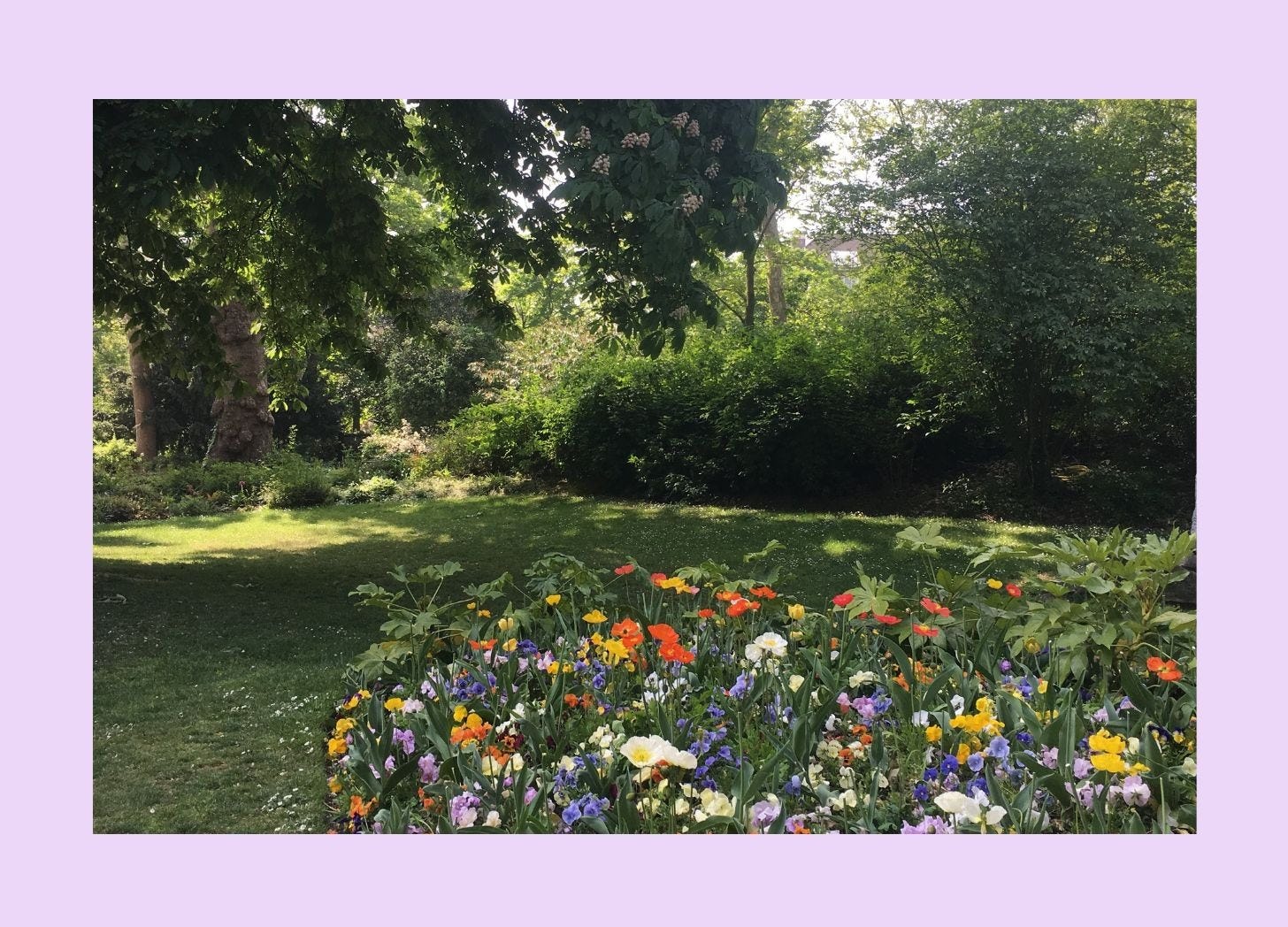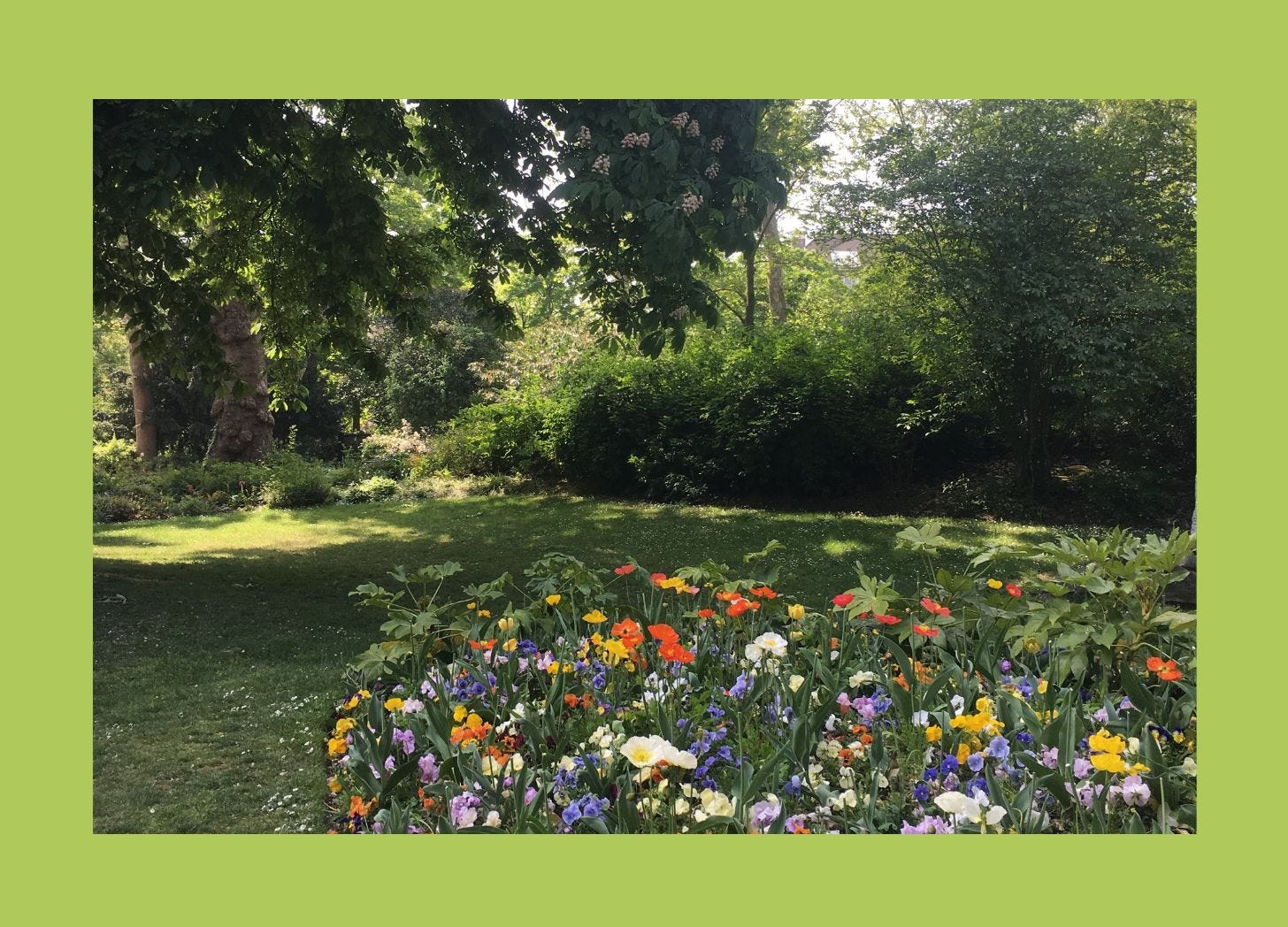Here are fruits, flowers, leaves, and branches
And here too is my heart, which beats only for you.
Do not tear it apart with your two white hands
And may this humble gift be sweet to your beautiful eyes.
— Paul Verlain, “Green,” Romances sans paroles (1874).
When I lived in Paris in 2018, the spring of my third year in University, I was surprised by May Day. I woke up that day to learn that there were no classes, and most businesses were not open. May Day has a dual significance in France - it's both International Workers' Day (La Fête du Travail) and a celebration involving lily of the valley flowers (La Fête du Muguet), celebrated in over 80 countries worldwide (ABS Paris, 2024).
I grew up in Florida, and I always thought of May Day as a nice little-known holiday. Some remnant of sharing flowers had been passed down to my mom, so we had a tradition of giving bouquets of spring flowers to our neighbors, however I realized that most of my peers did not celebrate May Day in any way.
In Paris, there was a sea of lily of the valley and other spring flowers which suddenly appeared on every street corner and metro entrance. Everyone seemed to be carrying a bouquet to someone else, and I was struck by the apparent romanticism of the holiday. This is something I loved about living in Paris—those everyday romantic gestures woven naturally into daily life.
While many shops were closed for the national holiday, the streets were far from empty. In some arrondissements, workers marched with banners and sang solidarity songs, their voices echoing through narrow streets. Meanwhile, in parks and gardens across the city, families spread blankets for picnics, exchanging those same white flowers as tokens of affection and good fortune.

I was living in an apartment complex for young people, the building was called Biermans-LaPotre, right next to the beautiful Parc Monsouris. I saw couples, families, and friends enjoying picnics throughout the park. On the weekends and holidays, there were small ponies for children to ride, and May Day was no exception.
The Floral Tradition 🌸
The lily of the valley is the quintessential flower associated with the holiday because of its connection to good fortune. This tradition dates back centuries - specifically to 1561, when King Charles IX of France received a lily of the valley plant on May 1st as a good luck charm. He liked the tradition so much that he began giving lily of the valley to ladies of his court every May 1st (The Good Life France, 2019).
Her delicate white bells cascade from slender green stems, their sweet fragrance hanging in the spring air. The lily of the valley symbolizes sweetness, humility, and the return of happiness, and is indeed strongly associated with luck in French tradition. These flowers naturally grow in woodlands across Europe and Asia, often appearing in early spring, making them perfect seasonal messengers.
The giving of lilies of the valley officially resurfaced in 1900 at a gala in Paris and started making its way through French culture once again. Fashion designer Christian Dior also embraced the lily of the valley as a lucky symbol throughout his career, incorporating le muguet into clothing designs and perfumes (Rosetta Stone, 2024).
The Ancient Roots of May Day
May Day celebrations trace their roots to ancient pagan festivals marking the arrival of spring. The Roman festival of Floralia honored Flora, the goddess of flowers, while Celtic cultures celebrated Beltane with bonfires to welcome the fertile season (Lou Messugo, 2024).
These early spring celebrations featured dancing around maypoles, which were tall wooden poles decorated with ribbons and flowers. Dancers would hold ribbons attached to the top of the pole and weave around each other, creating intricate patterns as the ribbons wrapped around the pole. This tradition symbolized the intertwining of masculine and feminine energies and the renewal of life in spring.
The crowning of May Queens was another common practice, where young women were selected to represent the goddess of spring. Adorned with flowers and seated on flowery thrones, these May Queens presided over the day's festivities as living symbols of fertility and the season's beauty.
The Labor Movement Connection
The holiday took on additional significance in the late 19th century when May 1st became International Workers' Day. This transformation began after the 1886 Haymarket affair in Chicago, where workers demonstrating for an eight-hour workday were met with violence. By 1890, May 1st was established as a day of worker solidarity worldwide (ABS Paris, 2024).
In France, May Day became an official paid holiday (Fête du Travail) in 1947, blending the springtime flower traditions with labor demonstrations (ABS Paris, 2024). The holiday officially became known as La Fête du Travail (Labor Day) in France in 1948, though the workers' rights component of the celebration had been observed for decades before that (French Entrée, 2023).
Today, May 1st is the only public holiday in France where employers are legally obligated to give their employees the day off (Rosetta Stone, 2024). Following in the footsteps of King Charles IX, many French people still give lilies of the valley to friends and family, while labor unions and other groups often hold parades or marches to commemorate the date.
These traditions connecting people to seasons and to one another still thrive as beautiful reminders of how ancient customs can evolve while maintaining their essence of community and natural celebration.
Dear readers, may your May Day be filled with the sweetness of spring flowers and the warmth of human connection. Whether you celebrate with a quiet moment appreciating nature's renewal or by honoring the dignity of workers everywhere, I wish you all the luck that the lily of the valley traditionally brings. May this season bring you happiness, good fortune, and a renewed appreciation for the traditions that connect us across time and borders.
Bonne Fête du Muguet et du Travail!
merci for reading, 🌸
Sophia
As a parting gift, a pretty poem by Paul Verlaine. "Green" is one of Verlaine's most famous poems from his collection "Songs Without Words" ("Romances sans paroles"). The title likely refers to the freshness and natural imagery that begins the poem, as the speaker offers gifts from nature along with his heart to his beloved. 💚
Green
Here are fruits, flowers, leaves, and branchesAnd here too is my heart, which beats only for you.
Do not tear it apart with your two white hands
And may this humble gift be sweet to your beautiful eyes.
I arrive still covered with dew
That the morning wind freezes on my brow.
Allow my fatigue, resting at your feet,
To dream of dear moments that will refresh it.
On your young breast let my head roll
Still resonant with your recent kisses;
Let it calm from the pleasant tempest,
And let me sleep a while since you are resting.
French:Green
Poète : Paul Verlaine (1844-1896)
Recueil : Romances sans paroles (1874).
Voici des fruits, des fleurs, des feuilles et des branches
Et puis voici mon coeur qui ne bat que pour vous.
Ne le déchirez pas avec vos deux mains blanches
Et qu'à vos yeux si beaux l'humble présent soit doux.
J'arrive tout couvert encore de rosée
Que le vent du matin vient glacer à mon front.
Souffrez que ma fatigue à vos pieds reposée
Rêve des chers instants qui la délasseront.
Sur votre jeune sein laissez rouler ma tête
Toute sonore encore de vos derniers baisers ;
Laissez-la s'apaiser de la bonne tempête,
Et que je dorme un peu puisque vous reposez.
Works Cited
ABS Paris. (2024). "May Day in France: Workers Rights and Lily of the Valley Flowers." Retrieved from https://www.absparis.com/blog/may-day-france
French Entrée. (2023). "May Day Celebrations in France." Retrieved from https://www.frenchentree.com/living-in-france/local-life/may-day-celebrations-in-france/
Lou Messugo. (2024). "May Day Traditions in France." Retrieved from https://loumessugo.com/may-day-traditions-in-france/
Rosetta Stone. (2024). "May Day in France: How Lilies and Protests Are Part of This French Holiday." Retrieved from https://blog.rosettastone.com/everything-you-need-to-know-about-may-1st-in-france/
The Good Life France. (2019). "Lily of the Valley on May Day in France." Retrieved from https://thegoodlifefrance.com/lily-of-the-valley-on-may-day-in-france/







